The power to weight ratio is one of the many important factors in gaining the full potential of the performance from your Lambretta. Stu Owen explains why…

Mathematics
Aerodynamics play an important role in the overall equation, the power to weight ratio is another important factor in determining these figures. There are two ways used to calculate the power to weight ratio (PWR) when referring to a vehicle, either by bhp per tonne, or per lb. We will use the lb formula, and the higher the figure the better the ratio, thus the faster you will accelerate. The formula is simple enough: the power of the engine divided by the mass of the whole vehicle. So if you take the GP200 as an example its power is 11.7hp (factory figure at the crank) and it weighs approximately 270lb. If you divide the first by the latter you get a figure of 0.043hp per lb. If you compare that to a Yamaha R1 (2015 model), its PWR is around 0.45hp/lb. As you can see, there is a massive difference in the figures with the Yamaha’s being 10 times that of the Lambretta. This is clearly highlighted in the performance differential between the two.
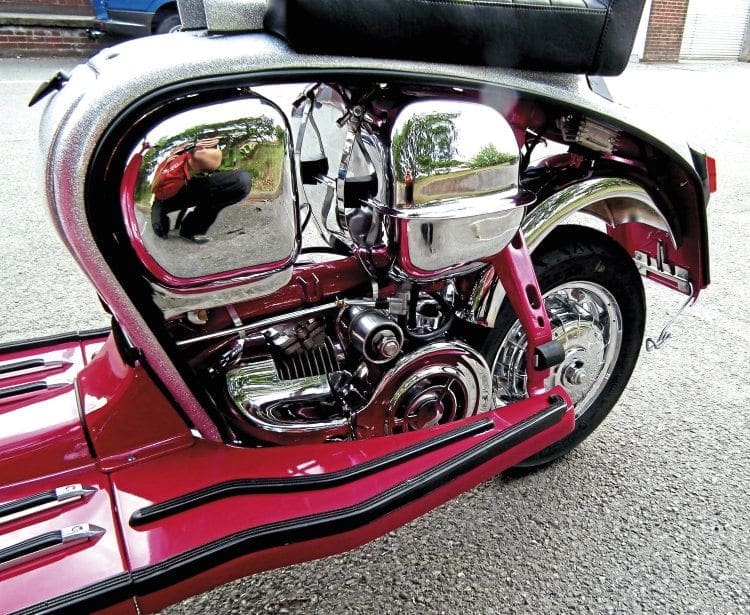
Now imagine you still have the same GP200 but put a tuned engine in it with 25bhp. The figure is now improved to 0.092hp/lb. Next, suppose you decide to remove some excess weight from the machine, say a total of 40Ib, so it now weighs 230lb. The figure is now improved to 0.108hp/lb — more than doubling the PWR you started off with. All the time the figure is improving, so too is the performance of your Lambretta.
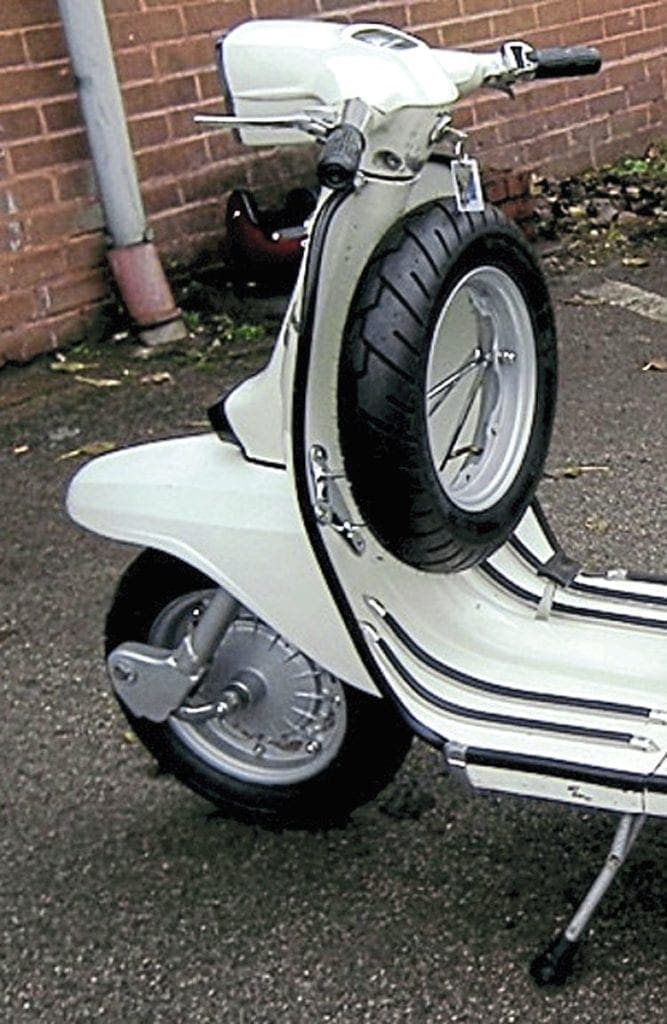
Things to consider
This all starts to sound very impressive but before you go off and buy the most powerful engine possible and then hacksaw everything off the frame, there are a few other things that need to be considered. Firstly the engine and what you are using it for. If it’s for long-distance touring then a high powered engine is not so important. You will want one with a good spread of power and capable of pulling tall gearing. If it’s an out and out street racer then yes more power is essential but also that is usable. If it has a tight/narrow powerband, high up the rev range, then its delivery will be difficult to control — quite often resulting in the front end become dangerously out of balance as you accelerate hard. A short powerband will cause you to fall out of the power during gear changes, in theory, slowing you down. This is cured by making the gearing shorter but this means the top speed is then compromised. The best balance is to produce high bhp but with a good spread of power and nice torque curve. Even so, make sure the engine you are fitting will be exactly right for what you are trying to achieve.
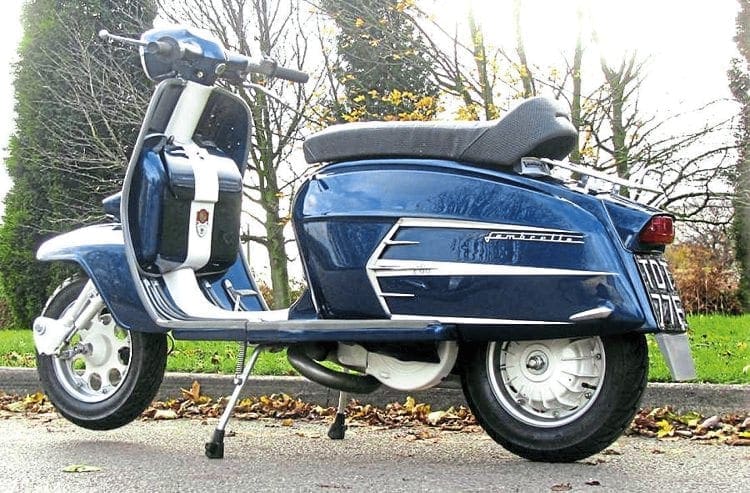
Next, is the weight removal which, although you want to get rid of as much as possible, needs to be balanced. Moving too much from the front end will mean the front wheel will come off the ground easily and make the front end very light, possibly making it feel twitchy. Removing too much from the back will mean not enough weight is over the back wheel causing it to lose traction. Carefully plan the weight removal with the overall balance of the machine including the rider. The seat position is very important and needs to be adequate for the rider to be far forward under acceleration but allow them to sit as far back as possible so they can crouch down at top speed.
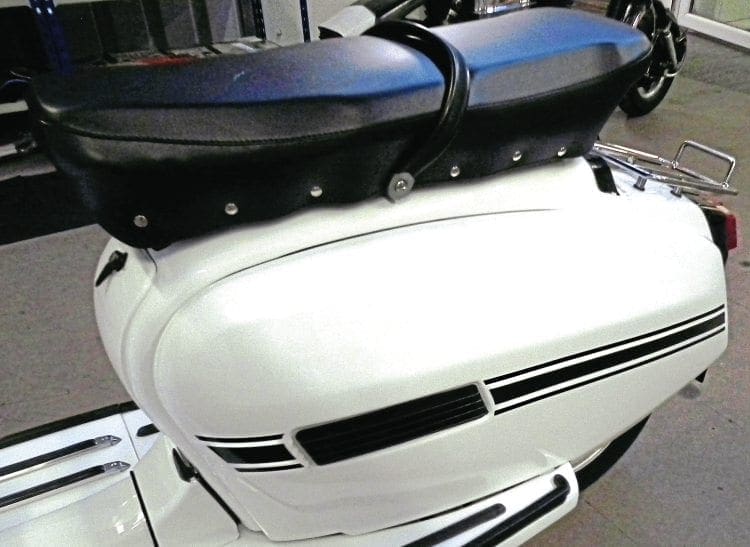
Initial weight removal
It is easy to remove larger and more obvious weight masses and make bigger gains to start with. If you are building a Lambretta for maximum potential from scratch then, in theory, don’t plan to add items with unnecessary weight. Also, if you are building one along the lines of a street racer the GP is the best model purely because it is the lightest frame. Though only 20mm lower on the fork stem the frame tube and forks are lighter than any other Lambretta, so bear this in mind. Removal of any racks, spare wheel and carrier plus any other bolt on extras such as mud flaps are instant weight removal and make the biggest gains. The next major item is the seat. If it is standard that will be considerably heavier than a much lighter race seat, for example, a Snetterton.
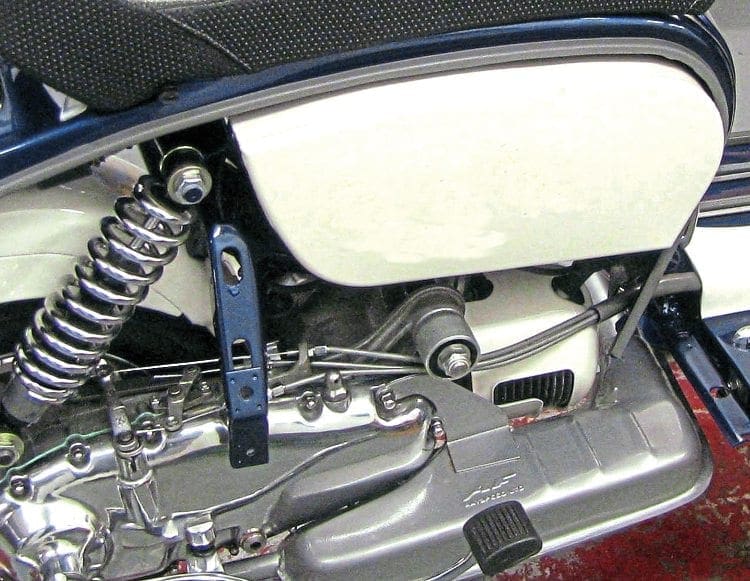
Next, components of the machine itself may be deemed unnecessary depending on how radical you want to be. Items such as the toolbox and splash guard can be removed as to can the rear mudguard to be replaced with one made from carbon fibre. Though it might seem unusual to remove the toolbox, from a performance point of view it isn’t needed. Also remember there is extra weight with what is being carried inside it. The next item to be looked at is probably the most debatable — the fuel tank. A large fuel tank with a big capacity is fine for long distance touring but in a street racer isn’t necessarily required. A standard Lambretta fuel tank holds 1.9 gallons or nine litres to be exact. This equates to 1.62lb per litre of fuel. The largest Lambretta fuel tanks hold about 18 litres of fuel. If it is full to the top, then the overall weight of the machine is 14.5lb heavier, a considerable amount and not forgetting the extra weight of the tank itself. Any tuned Lambretta engine is quite thirsty so a standard one doesn’t have much over a 50-mile range but a 12 litre one should give you enough range without adding too much weight. It’s certainly one of the big decisions you will need to make when building your Lambretta in terms of performance.
Taking it one step further
Having saved on the big items the attention now focuses on the smaller items or areas where any excess material can be removed. This can be from the frame in the form of tank cutting holes and removal of brackets that aren’t needed to other components such as the forks and trimming of the link boxes. Look at anything that is being fitted to the machine and ask yourself if any excess weight can be removed but always remember never to take any material out of stress-related areas.
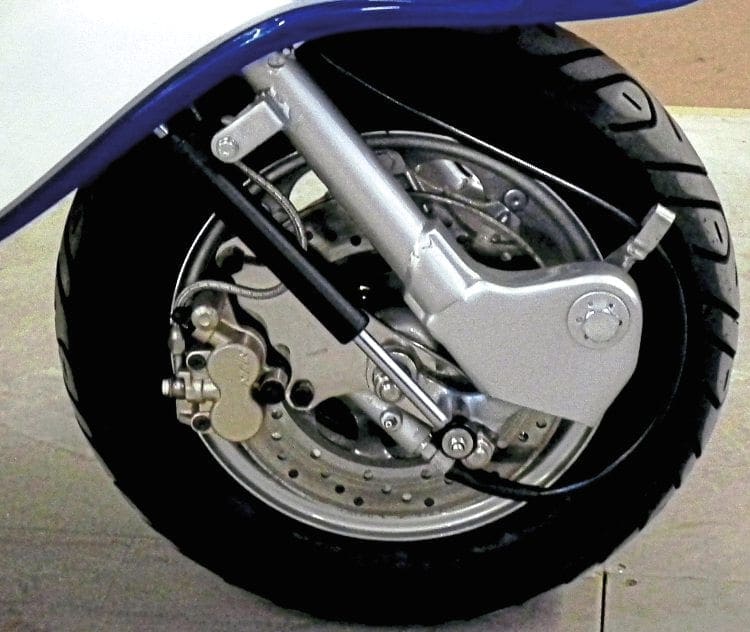
For any components that are required, see if a lighter alternative can be found instead. Take the horn as an example — fit the smallest and lightest possible. Every detail matters. Replace the existing throttle with a quick action one to improve throttle response time. Another example is the cables which if all added up weigh several pounds. Replacing them with much lighter ones from a mountain bike saves a considerable amount. Every component that is required should be looked at from this angle. Even if it is just a few ounces lighter… it all adds up, and it’s worth it. Remember ounces make pounds on the grander scale of things.
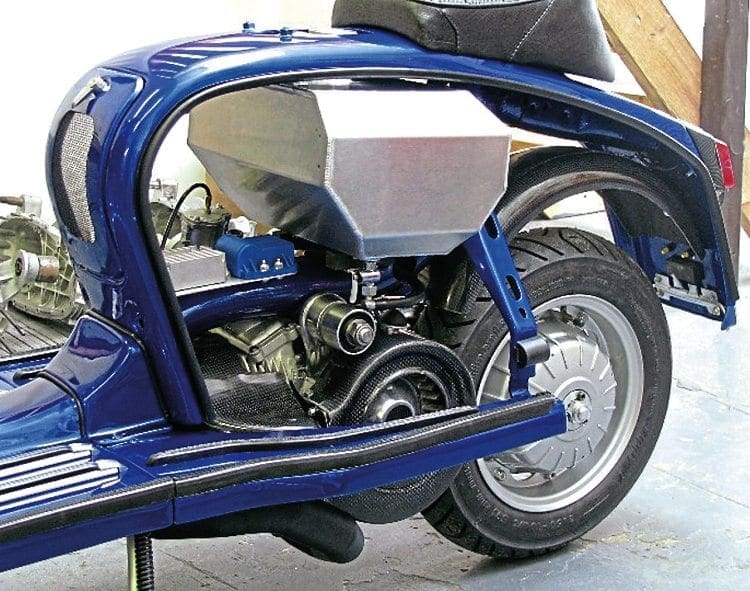
Look how an item is mounted and at the brackets that are used to hold it in position. Are they needed and do they need to be on an industrial scale? Can they be placed elsewhere, not only to save weight but also balance it out evenly as previously described? Use the frame to mount components directly to it such as the coil and the CDI. These can be placed where the toolbox once sat. The wiring loom is now shorter and lighter, so is the HT lead. It may not seem it at the time but everything makes a difference when trying to improve the power to weight ratio figure.
Materials
For its size, the Lambretta is a heavy vehicle in comparison to its modern counterparts. Though lighter plastic materials were used towards the end of production, the majority of it is made up of steel and aluminium. The use of carbon fibre or fibreglass bodywork will make the overall weight considerably less. So too will replacing steel items with aluminium versions, where possible. Good examples are the fuel tank, mounting brackets and cable guides. Even in the engine, items like the rear hub bearing plate can be made from aluminium; the list is endless.
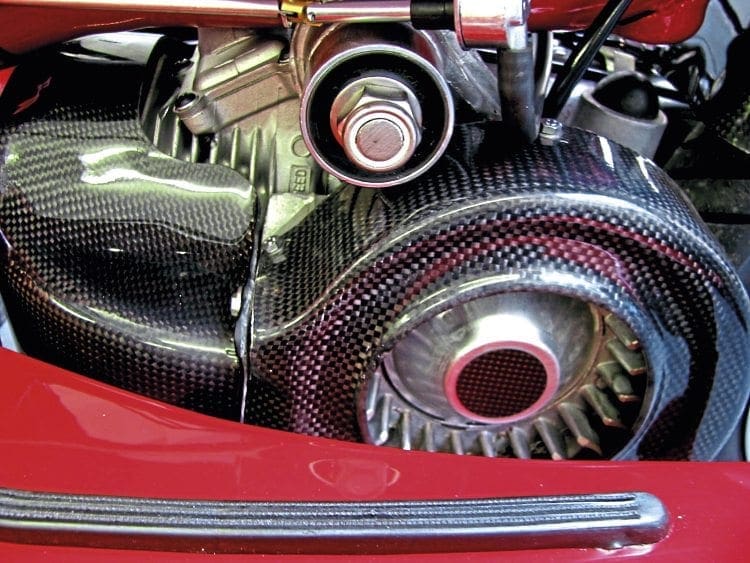
One component often overlooked is the fixings, whether it is nuts, bolts, studs, screws or even washers. There are several hundred on a Lambretta and combined are heavier than you think. A lot can be replaced with aluminium fixings in non-stress related areas, such as in the headset or just general mounting. In stress related areas such as the side case then titanium bolts can be used instead. Though they cost considerably more, they have a much greater lifespan and in the pursuit of ultimate performance it is a worthwhile exercise. If you had a big budget then the majority of the vehicle could use titanium fasteners but it would probably cost you as much as an engine. If you are using steel studs or bolts then cut them to the exact length required. An 8mm bolt that has a centimetre of unused thread on the end isn’t required, so cut it off.
Cosmetics
Look at any true sports vehicle or racing machine and it isn’t full of cosmetic extras. They are unimportant in the pursuit of performance and unnecessary; certain items can be removed that don’t need to be there. As already mentioned racks or carriers of any type plus oil holders and leg shield toolboxes are not required. Floor runners and strips can be replaced with grip tape. Side panel grilles and mud flaps especially if made from steel can be removed or replaced. One way of looking at it, from a racing point of view, is that if a component doesn’t serve a purpose to improve performance… then it shouldn’t be on the vehicle.
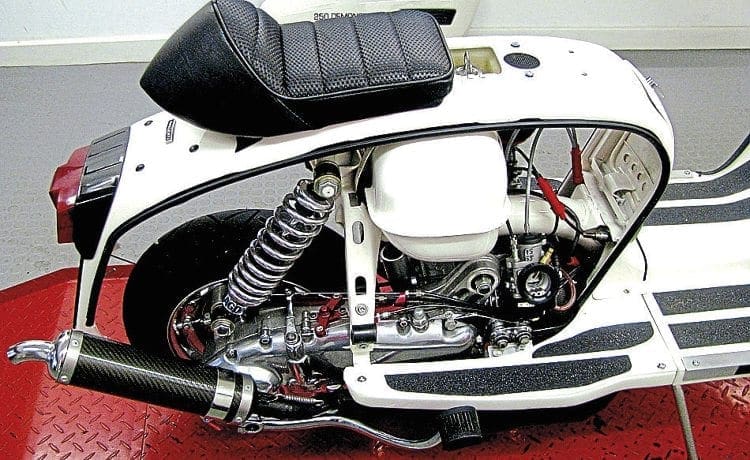
What can you expect?
There is a dividing line when it comes to a Lambretta that is prepared for track use compared one that is on the road. A track Lambretta can be stripped to the bare bones when it comes to weight removal and doesn’t need such items as lighting or a stand for instance. On the road, certain things are compulsory or required for it to be practical to use. When building a new project or looking at improving the performance of an already built machine, do as much as you can to make it as light as possible. What is the point of spending a considerable amount of money on a powerful engine to then fit it into a heavy and cumbersome chassis that will hold back its true potential?
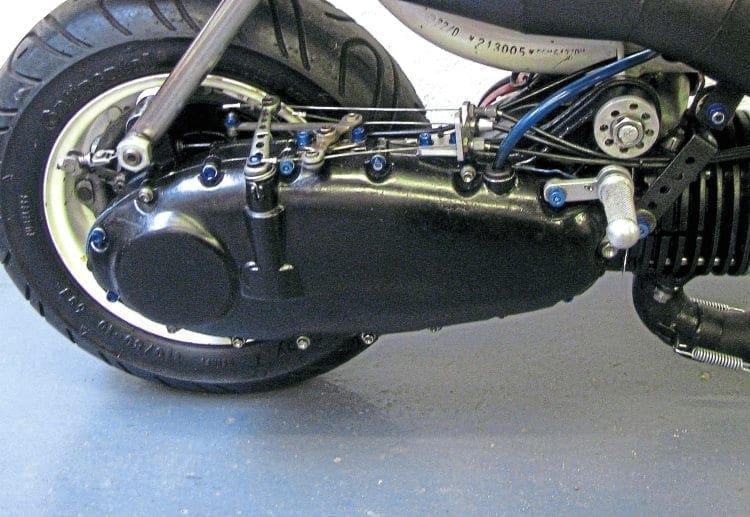
Going back to the figures used at the beginning of this article, it’s possible to take approximately 70-80lb off the original weight of a road going Lambretta, depending how radical you are. For argument’s sake, we will say the weight is now 200lb and you still have a 25bhp engine. The power to weight ratio is now 0.125hp/lb. Compared to a standard GP200 the figure has been more than doubled which in terms of performance is pretty impressive. With the latest tuning methods and engines that are currently being produced for the Lambretta there is the potential to make that figure even greater. Work out the weight of your Lambretta and whether it’s standard or tuned get it on a dyno and find out its bhp. You then have what is required to calculate its power to weight ratio for yourself and look at ways of increasing it. You can then improve the performance of your Lambretta in ways you didn’t think were possible before.
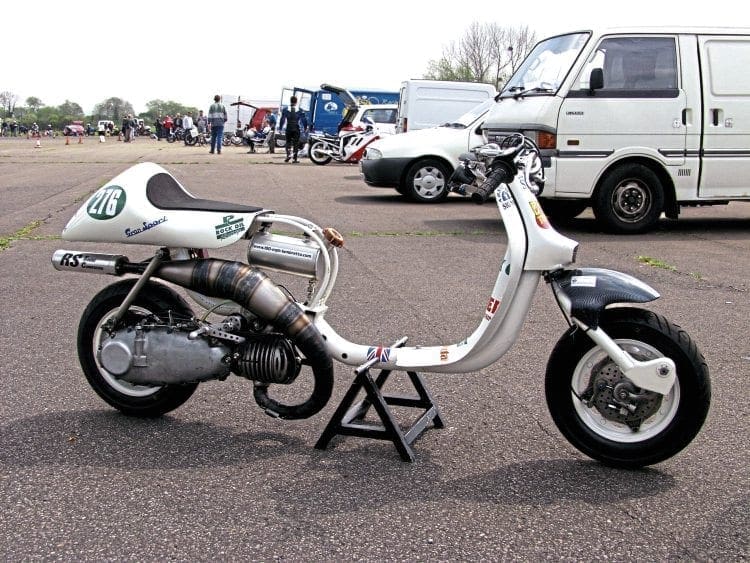
Words & Photographs: Stu Owen



